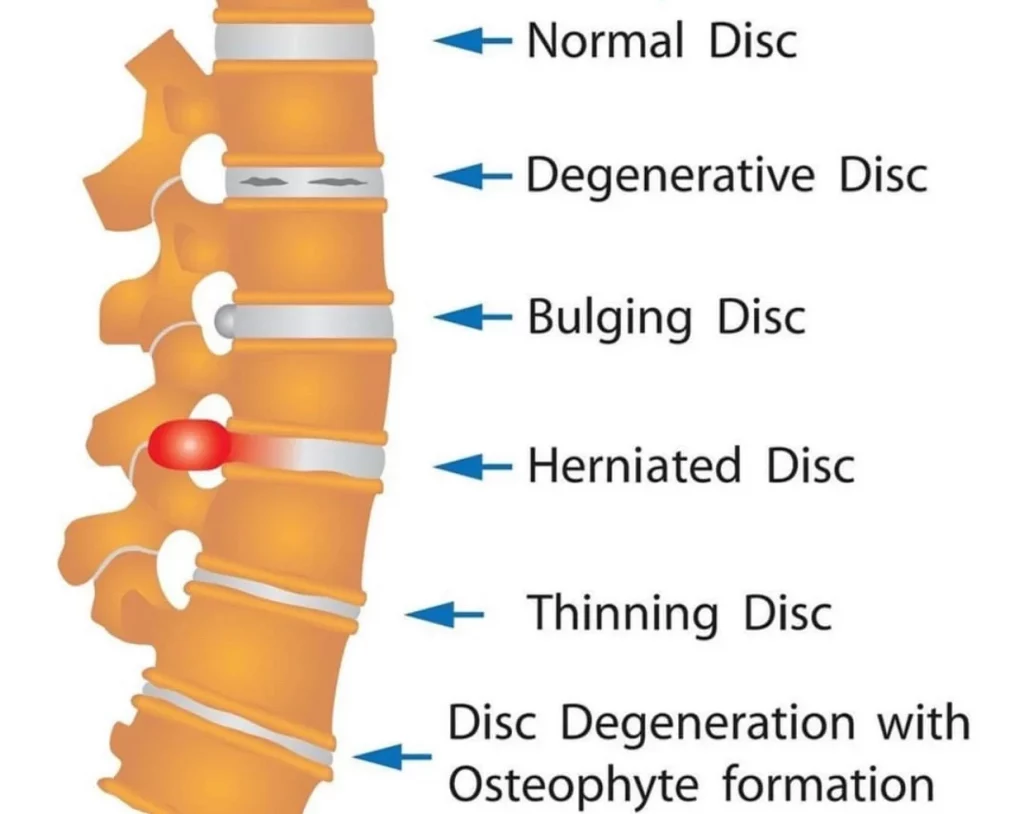
Spondylolisthesis, which is a degenerative disc disease, is quite a mouthful to say. Perhaps that’s why spondylolisthesis more often referred to as having a “slipped disc” — although that’s not quite the case. Although spondylolisthesis does include slippage, it’s not the same as the aforementioned ailment. In spondylolisthesis, a vertebra slips out of place and over the top of another vertebra beneath it.
While spondylolisthesis is a spinal condition that affects the lower vertebrae, some people don’t experience any back pain at all, instead only experiencing their legs after physical exertion. However, if pain and tenderness in the back do exist, these symptoms are persistent in the lower region. People with spondylolisthesis may also experience thigh pain as well as tight hamstring and buttock muscles.
Genetics can play a role in someone’s susceptibility to spondylolisthesis, as can certain activities, like football, gymnastics, running, and weightlifting. Additionally, a condition called spondylolysis — which happens when a vertebra is broken but doesn’t fall — often precedes spondylolisthesis. Spondlylolisthesis that is present at birth is considered congenital, whereas spondylolisthesis as a result of injury or degeneration is considered acquired.
You can also read: HOW FACET JOINT SURGERY COULD BE AVOIDED THROUGH STEM CELL THERAPY
Treatment For Spondylolisthesis
After examinations and imagery are done to diagnose spondylolisthesis, your physician may recommend surgery. The treatment route for spondylolisthesis often depends on the grade at which your slippage is assessed. The grades are as follows:
Grade I: 0%-25%
Grade II: 25%-50%
Grade III: 50%-75%
Grade IV: 75%-100%
Grade V: >100%
In grade I spondylolisthesis, about a quarter of the vertebral body has slipped forward. The medical grading develops out to grade V, at which point the vertebral body has completely fallen over and spondyloptosis — which is a much more serious condition — has developed.
As determined by your physician(s), surgical treatments may be done in order to achieve decompression (AKA relieve pressure on nerves) and/or achieve fusion (AKA restore stability). Spinal fusion is typically the most effective surgical choice, during which your surgeon will connect your vertebrae, thus reducing abnormal movement.
You might be interested: WHY SURGERY FOR COMPRESSION & VERTEBRAE FRACTURES OF THE SPINE SHOULD BE AVOIDED
Stem Cell Usage For Spondylolisthesis
As with any medical ailment, surgery isn’t always the best option to treat spondylolisthesis. In fact, some people with spondylolisthesis don’t require treatment at all. However, if you do need treatment — or just aim to be proactive with your help — utilizing stem cells may be a better option than going under the knife.
When stem cell therapy is used as the method of treatment for spondylolisthesis, the goal is to strengthen the ligaments and tendons surrounding and attached to the slipped vertebra. As the ligaments and tendons strengthen, stability is restored to the spine. And as stability is restored to the spine, there is the potential to prevent the advancement of spondylolisthesis — or in some cases, even reverse the condition entirely. Reversal is most likely when the stem cells differentiate into new cells, therefore replacing damaged tendons, ligaments, and bones.
The two most common forms of stem cell therapy for this application include Wharton’s Jelly stem cells and platelet-rich plasma (PRP). PRP is one of the most common cell therapies, but the exact route for treatment is largely dependent on the patient’s condition, goals, and preferences.
Stem cell treatments very well may be the perfect route for patients currently with spondylolisthesis or for those who are developing spondylolisthesis symptoms. There is still more research to be done, but the prognosis is positive when it comes to stem cell therapy’s usage within spondylothesis treatment.


